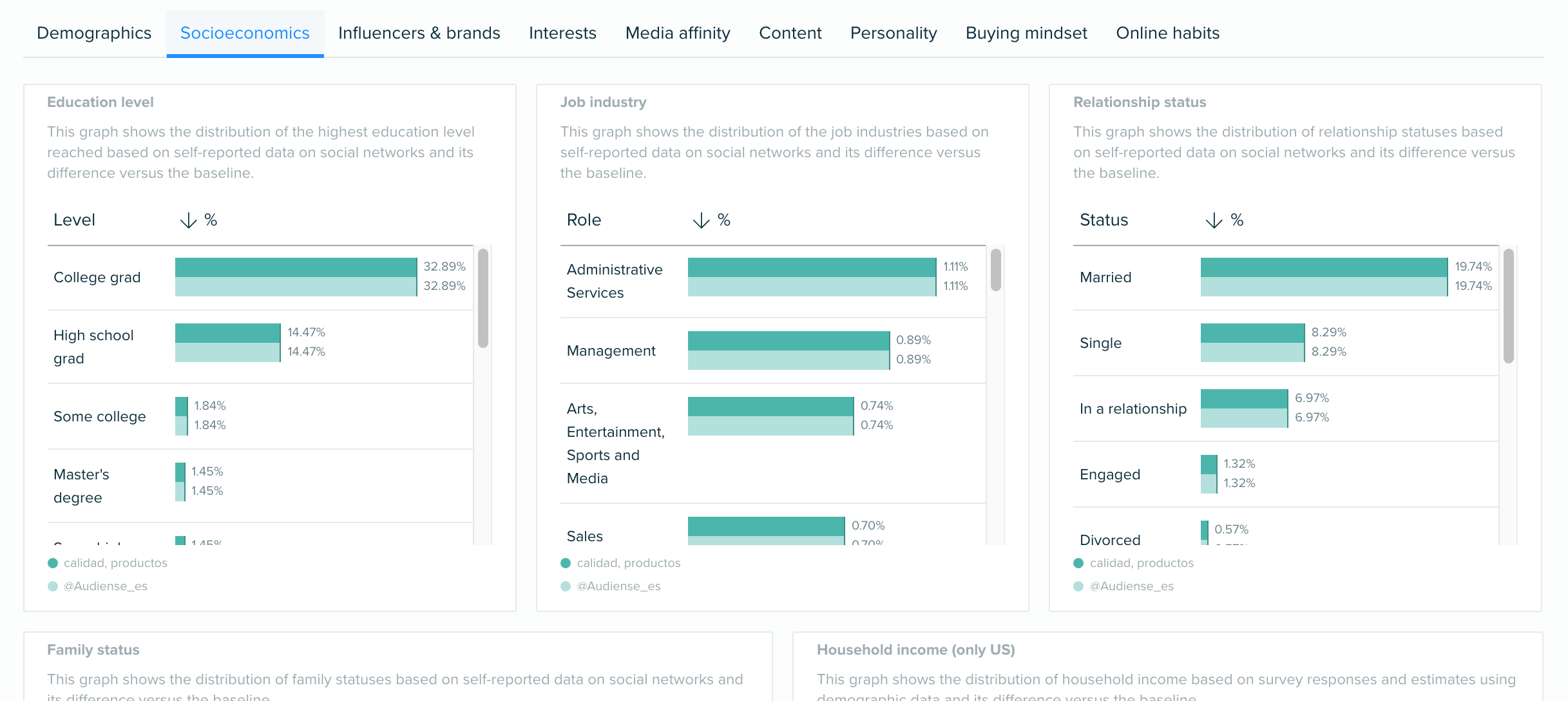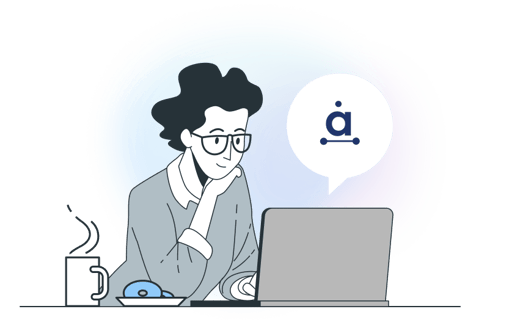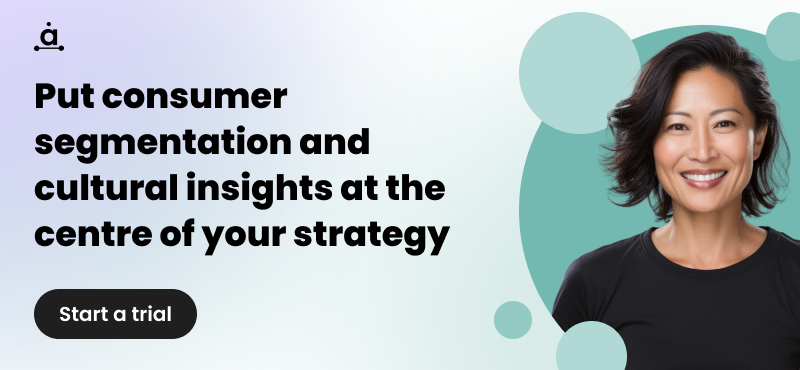The blueprint for high-converting audience targeting: strategies, definitions, and types
Pop quiz: what does your ideal customer look like?
Chances are your perfect customer can’t be simplified into a single persona or category.
For example, maybe your business attracts boomers and zoomers alike. Perhaps you have enterprise and small business clients.
Listen: doing business today means taking advantage of opportunities to reach new audience members across platforms, borders, and demographics. Having a split audience is totally common.
But the opportunity to do business anywhere and everywhere presents two distinct challenges: nailing down your target audience and serving them the right messages.
The more you’re able to identify the wants and needs of your customer groups, the easier it is to create optimized marketing campaigns for each group. This doesn’t have to be a guessing game, granted you've mastered the art of audience targeting.
“What is audience targeting anyway?”
Let’s kick things off with a quick audience targeting definition we can work with:
Audience targeting is the process of identifying and segmenting relevant customers based on factors including demographics, purchasing intent, and personal interests.
This might seem pretty self-explanatory, right? Your audience isn’t a monolith and you shouldn’t treat your customers as one-size-fits-all when it comes to marketing.
However, consider the financial implications of improved audience targeting. Recent studies underscore the importance of leveraging customer analytics to understand and meet audience needs, and therefore enhance marketing ROI by up to 50%.
The takeaway? Brands need to not only take a deep dive into their customer analytics but also use that data to determine exactly what their audience segments need. The good news is that Intelligent audience targeting can address both issues at once.
What are the different types of audience targeting?
Effectively marketing to a specific audience means separating each customer group into a segment.
And each segment will require different marketing messages and campaigns depending on their wants and needs.
But how do you figure out your segments? With so much data to gather, the process of building your audience segments can be daunting.
We’ve got you covered. Below are some examples of the various types of audience targeting to help you create your own customer segments.
Demographic targeting
Demographics represent a solid starting point for audience targeting.
Although demographic data is fairly general, there are plenty of marketing insights and decisions you can glean from it. For example:
- Gender: although many products are gender-agnostic, some brands may still find that their audience is largely male, female, or non-binary.
- Location: especially important for digital brands, understanding your customers’ geography can help you speak your audience’s language (literally).
- Age: this has a direct impact on messaging and value proposition (think: “cool” factor and style for younger consumers, utility and security for older consumers)
- Income: bigger spenders signal more opportunities for premium products (and on the flip side, lower-income customers highlight the importance of budget offerings)
Beyond basic demographic data, also consider the importance of digging into socioeconomic data to segment your audience into more specific groups. This might include segments such as married couples, college-educated customers, or people with a specific job title (see below):
Figuring out all of the above “by hand” is obviously a tall order. Rather than analyze your data profile-by-profile, you need a more comprehensive and holistic view of your customer demographics to make meaningful decisions. That’s exactly what Audiense Insights can provide.

Purchase/usage-based targeting
Although audience targeting obviously involves seeking out new customers, don’t forget the value of the ones that you already have.
It’s well-documented that it costs significantly less to retain current customers than it does to acquire new ones. Brands should strive to identify their VIPs to determine what they have in common and likewise increase their existing customer LTV for the long-term. This can be done by analyzing:
- How long someone has been a customer or subscriber (months, years)
- How much a someone has spent over their customer lifecycle ($$$)
- How often someone has logged into an account or product (specifically for SaaS)
For example, companies can use tools such as Salesforce to zero in on their most valuable customers in terms of dollars spent.
Having a segment of your “best” customers should be a priority for any brands’ audience targeting strategy. Given that these folks already know and trust you, making them prime candidates for upselling bigger-ticket offers and longer-term contracts.
Platform-based targeting
Targeting online marketing audiences means knowing where your customers are coming from.
From organic search and social media to paid ads and email, marketers need to have a pulse on how customers behave based on where they hang out.
For example, you might find that comparing the performance and marketing messages that perform well via SEO and social media are apples and oranges. Platforms like Google Analytics can clue you in on which segments are the most valuable and engaged without too much digging:
Keep in mind that social media targeting requires brands to get even more granular with their data (for example, how customers on Facebook behave versus X or Instagram). Segmenting audience members on social media can help uncover opportunities to double-dip content and promotions, meanwhile pulling back on networks that aren’t producing engagement.
Behavioural targeting
Behavioural targeting focuses on how people (you guessed it) behave; specifically how they behave online.
This can include their scrolling habits, which social platforms they frequent, what posts they are liking, which blogs they’re reading - everything they do online can be recorded and analyzed and then used for targeting purposes.
Examples of behavior-based insights include:
● Time of day someone is most likely to engage
● Preferred platform (e.g., high engagement on Instagram, none on X)
● Interaction with certain types of posts (videos, memes, product tutorials)
● Frequency of engagement (daily scrollers vs. once-a-month lurkers)
With Audiense, you can analyze an audience's online behaviour to:
● Create targeted campaigns that match your audience’s online habits
● Prioritize different content types for that audience
● Deliver timely messages that align with their peak engagement times

Above we can see that this audience frequents instagram and Twitch, they are heavy mobile users, they post a lot of their own content, they are most active on Fridays between 12-5pm. So as a brand who is targeting them you would want to spend the majority of your ad spend on Instagram, and run campaigns on Fridays between 12-5pm.
When you use behavioural targeting you ensure that the content you serve a specific audience is going to make an impact - it will drive a click, a follow, or a purchase.
Interest-based targeting
In short, what do your audience members care about? What makes them tick?
Audience targeting based on interest empowers you to understand and empathize with your customers. This allows you to relate to them and create more meaningful relationships.
Thankfully, so much of what your customers care about it out in the open via social. For example, Audiense can assist brands with interest-based targeting by aggregating audience-wide information such as:
- Customer interests (based on social media activity, captions, descriptions, links)
- Media affinity (what they watch and consume)
- Content (who they follow, frequently-used hashtags)
This type of targeting highlights your customers’ values and what influences them. This data can give you some much-needed direction when it comes time to put together your next marketing campaign or post.
Let’s look at an example of effective audience targeting in action. These recent Instagram posts from Nalgene appeal to two totally different (but still relevant!) audiences. The former post presents a more ‘traditional” post tailored for the brand’s adventure-focused base. Meanwhile, the second post is geared toward a sci-fi (Star Wars) fans audience. Both are in line with the brand’s voice and values.
Intent-based targeting
Finally, there’s intent-based targeting which focuses on what people want to see from your products and how they plan on using them.
The value of using intent data can’t be overstated. This includes identifying new customer sects and better alignment of your sales and marketing efforts.
Some examples of intent-based data points include:
- Organic keywords and terms used to discover your products
- Your most popular products and product categories
- Customer questions, surveys, and firsthand feedback (including brand mentions)
For example, are your customers looking for the “safest,” “cheapest,” or “newest?” What do they look to achieve by becoming a customer? Interpreting this data makes it easier to understand your customers’ goals (see how Audiense does it below).

Lookalike targeting
Lookalike targeting is a great way to scale your targeting efforts without losing audience relevance.
Instead of starting from scratch, this method allows you to target audiences based on a target group you have already created.
This strategy is especially useful if you have limited audience data or you have a small but loyal group of customers.
Essentially you pick an audience (like your most loyal customers) and you find people who look exactly like them in terms of their personality, behaviours and interests - you’re finding “lookalikes”.
Using Audiense you can:
- Upload an existing customer list
- View this audiences top shared affinities, interests, demographics and psychographics,
- Use this data to create a net new audience report (collecting a bigger audience with the same affinities, interests, demographics and psychographics)
- Export these members to your ads platforms to be targeted (now you are targeting lookalikes!)
So now you can go from targeting your top customer list of 10,000, to a target list of 100,000 or larger made up of people who look exactly like your most loyal customers.

In the example above, let’s pretend that you are a book store and your most loyal customers are a group of females age 25-34, and their top authors include James Clear and Brene Brown (among others). Using Audiense you can then create a report based on these same inputs and collect people that look just like your target customer base (but this audience will be much larger and allow you to expand your reach).
3 tips for fine-tuning your audience marketing strategy
To wrap things up, let’s review some quick tips for optimizing and improving your online targeting strategies in pursuit of eager, qualified customers.
Segment your audience ASAP
No surprises here. The sooner you can separate your audience into segments, the better. Again, doing so allows you to laser-focus your campaigns and also cross-promote content depending on how different (or similar) your segments are. For some businesses, you’ll need to run totally different campaigns based on your segments.
Of course, you don’t want to split your audience into too many categories. This will ultimately spread your resources thin. On the flip side, a tool like Audiense can identify and build your audience segments in a snap based on actual consumer data. The upside of using our platform is that accuracy is guaranteed given that the numbers are your own.

Find common threads between your most engaged segments
The end-goal here is to boost the ROI of your marketing campaigns, right? Take a deep-dive into your VIPs and big-spenders across your segments to see what they share in terms of demographics, intent, values, and so on. Although you might have different segments under your business’ umbrella, you might be surprised at what they have in common. Identifying these points will ultimately make your marketing more efficient.
Commit to tracking your audience data long-term
Piggybacking on the tip above, audiences rarely stay static.
People change. So do their values, expectations, and purchasing preferences.
Audience targeting isn’t a one-and-done affair. Instead, it should be something companies commit to doing for the long haul. Gathering data over the course of years gives you a larger sample set to work with, meaning that you can refine and improve your campaigns with each and every customer in due time.
What does your audience targeting strategy look like?
If you aren’t actively building and updating your audience segments, you aren’t growing as a marketer, brand or business.
The businesses winning today are the ones that use audience insights and real customer data to connect with the right audiences, with the right message, and the right time.
With Audiense you never have to guess how to target an audience. You get instant clarification on who and audience is and how to reach them.
From psychographics to platform preferences, we can help you unlock insights that drive real results.
Ready to use smarter targeting to increase audience engagement and conversions? Sign up for Audiense today.






.png?width=647&height=457&name=image5%20(51).png)
